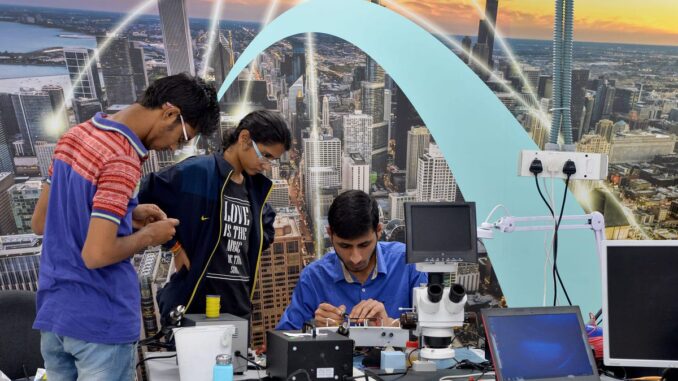
Innovation, science, and technology have significantly influenced India’s economic and social progress. The government transitioned from a resolution on scientific policy in 1958 to a declaration on technology policy in 1983, a policy on science and technology in 2003, and eventually a policy on science, technology, and innovation in 2013. (2013). These serve as examples of previous administrations’ dedication to science and technology as well as their welcome emphasis on the significance of innovation that is driven by science and technology over time.
We can examine our 40-year journey, including both pre-and post-liberalized India.
First, for more than 40 years, India tried out socialism, which kept out foreign money and technology while promoting indigenous technology-based domestic innovation.
Second, local businesses were modest because the Indian economy didn’t start expanding until the 1990s. As a result, Indian businesspeople became fond of starting tiny projects utilizing indigenous (import-substituted) technologies that required very little cash.
Finally, local businesses understood that while there are rich and poor individuals in India, focusing primarily on the wealthy would restrict their market. They were compelled to develop goods that covered the entire economic spectrum, from top to bottom. As a result, an innovation that was accessible to all was thoroughly included in the plan.
Fourth, India’s innovation mindset turned out to be the most significant motivator. Several Indian leaders had the temerity to disagree with the prevailing opinion. Small size, low pricing, and limited research budgets combined with large aspirations resulted in an explosive mix of extreme scarcity and high aspiration, which sparked Indian invention.
In the earlier, pre-liberalized India, technological development was driven by denial. Due to a lack of resources and a restricted economy in the pre-liberalized age, foreign innovations were rejected. In addition, they were rejected for strategic and security considerations. India achieved technological self-reliance in both the civilian and strategic fields of space, defense, nuclear energy, and supercomputers by following the path of “technonationalism.” Give me an example.
Consider defense. India created a variety of missile and rocket systems, as well as remote-controlled cars and light combat aircraft. An excellent illustration of Indian expertise in strategic technology is Brahmos. India didn’t have access to any of these technologies because of love or financial necessity.
Consider nuclear power. From the exploration of raw resources to the design and building of big nuclear reactors, every technology has been created independently. India’s push for technonationalism gave rise to its nuclear fast-breeder reactors.
Take a look at space technology, including domestic development, satellites, and launch vehicles including the SLV, ASLV, PSLV, and GSLV. The Chandrayan-1 moon orbiter mission, the Mars Orbiter Mission, and even the recent launch of 20 satellites at once are excellent instances. It makes sense that India is now one of the few countries in the world with a legitimate competence in space technology.
Strength honors other strengths. A nation’s increased access to technology that has previously been unavailable to it is a result of its expanding technological strength. When technonationalism offered India a solid technological foundation, the system of technology denial itself changed.
For instance, India’s experience with supercomputers started when it was denied access to the CRAY supercomputer in the middle of the 1980s. India’s capability to produce 100-gigaflop machines was proved in 1998 when C-DAC unveiled PARAM 10,000. In response, the US loosened export restrictions. The same year, CRAY, which had previously rejected the licensing of technology, set up shop in India.
India and the US inked a significant civil nuclear agreement in 2008 that offered India access to some nuclear resources and technology. With its recent membership in the Missile Technology Control Regime (MTCR), India has gained access to key missile technologies. There will be more.
But what about the technological prowess of Indian business? In some industries, the Indian industry has done well. One illustration is India’s supremacy in generic medication. One more is the auto sector.
When it comes to what everyone refers to as “frugal innovation,” the Indian industry is a global leader. I like to use the phrase “affordable greatness.” Let’s use the following inquiries as an example.
• Is it possible to produce a high-quality Hepatitis-B vaccine that costs $20 a dose for a price that is 40 times lower rather than merely 40%?
• Is it possible to produce a high-quality prosthetic foot that costs US$10,000 for 300 times less than that, not merely by 300%?
• Can we make ECG equipment available for 20 times less than its current price, not only 20% less than its current price of US$10,000?
As unbelievable as it may sound, Indian technology developers have accomplished all of these seemingly insurmountable tasks. And this has so caught the attention of the globe that a new phrase, “Innovation,” is already starting to circulate! Books on inexpensive innovation are being produced because the rest of the world wants to learn from Indian business!

Leave a Reply